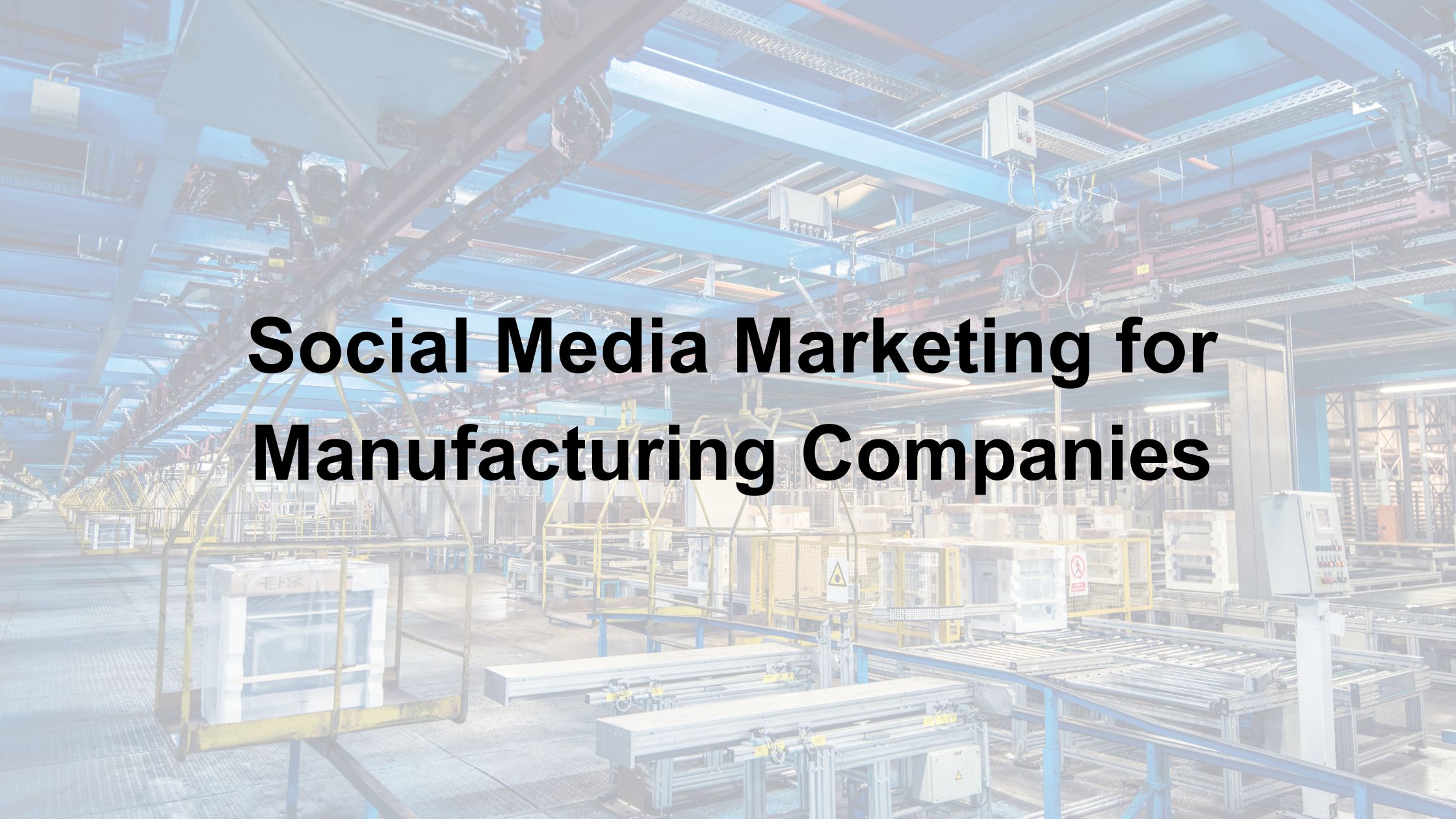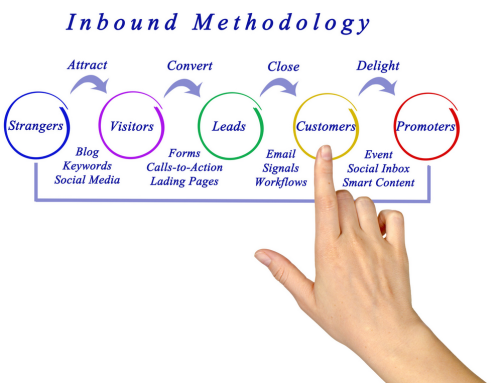The Essential Role of Social Media Marketing for Manufacturing Companies Today
For a long time, the manufacturing industry relied on old marketing methods. Now, digital media and social media platforms have changed the game. Today, manufacturing companies that use social media have a big advantage.
Social media is a great way for manufacturers to increase brand awareness. It allows them to show that they are leaders in their industry. By sharing helpful and interesting content, manufacturers can show off their expertise and products. This helps them reach more people, improve their brand image, and increase sales.
Crafting a Social Media Strategy That Works for Manufacturers
A good social media strategy takes careful thought and planning. Before you begin using social media for manufacturers, you need to set your goals first. Then, find out who your target audience is. Finally, choose the platforms where your audience is most active.
Understanding these key parts will help you make good content. You can adjust your message to connect with the right people. A good plan will ensure that your social media efforts help achieve your business goals.
Identifying Your Target Audience on Social Platforms
Effective social media marketing begins with understanding your target audience. It’s important to learn about their demographics, interests, and challenges. You should also know which social platforms they prefer to use. This information helps you create content that resonates with the right people.
Think about the different industries and job titles you want to connect with. Also, consider the decision-makers you aim to reach. This will help your marketing team know which social platforms your audience prefers. It will guide them in finding out the type of content that interests them. I recommend starting this process by making a list of your frequently asked questions.
Doing market research and looking at your website traffic can help you see how people use the internet. You can also look at social media analytics. These methods give you valuable insights into what your audience likes and how they act online. With this information, you can make a social media strategy. This strategy will share the right message with the right people at the right time.
Setting Realistic and Measurable Goals
Before you begin a social media campaign, it is important to set clear goals that are realistic and easy to measure. You might want to increase brand awareness, gain leads, or bring more people to your website. Clearly defining these goals will help you stay focused on what you do on social media. It will also make it easier to track your progress.
To generate leads, you can make content that invites people to sign up for a webinar, download a white paper, or ask for a quote. If your main goal is to build brand awareness, look at numbers like reach, impressions, and social media engagement. These will help you see how well you are doing.
Setting clear goals is important for your marketing campaigns. These goals need to be specific and easy to measure. They should also be realistic and have a deadline. This is known as SMART goals. Having these goals helps you see how well your investment is working.
Top Social Media Platforms for Manufacturers and How to Use Them
With so many social media platforms available, it’s key to focus on the ones where your target audience spends their time. For manufacturers, LinkedIn, YouTube, and X each provide special advantages. Other platforms can work for Manufacturing, but these three are the most common.
Understanding the strengths and weaknesses of each social media platform allows you to optimize your content for better engagement and presence on these platforms.
Leveraging LinkedIn for B2B Networking and Leads
LinkedIn is a great place for B2B networking and lead generation. It is designed for professionals, which makes it perfect for manufacturers to find potential clients, connect with industry leaders, and attract new employees. You should make your company page better by using the right keywords. Clearly display your products and services. Don’t forget to share articles about your industry and updates about your company.
- Join discussions about your industry.
- Connect with groups related to your field.
- Participate in talks to show you are a leader and meet potential clients.
- Link up with experts in your area.
- Share valuable content that helps make your brand trustworthy.
LinkedIn’s targeted ads can help you connect with specific groups and industries. This means your message will reach the right people. By focusing on B2B with LinkedIn, you can make valuable connections and generate leads for your manufacturing business.
Utilizing YouTube for Product Demonstrations and Brand Stories
YouTube is a fantastic place to share your products. You can also show how you make them and tell the stories about your brand. When you use YouTube videos properly, they can help you connect with people and make a big impression.
- Tutorials and how-to videos
- Vlogs about your life
- Reviews of products or services
- Fun challenges or games
- Learning content on topics you enjoy
- Interviews with interesting people
- Travel videos showing different places
- Cooking or recipe videos
- Tips and advice for personal growth
- Documentaries on important subjects
- Product Demonstrations: Create videos that highlight the features, benefits, and uses of your products.
- Facility Tours: Offer online tours of your manufacturing spaces to showcase your skills and what you can do.
- Customer Testimonials: Share video reviews from satisfied customers sharing their positive experiences with your products and services.
Content Creation: What to Share
Creating good content is key for your social media success. It might feel easy to only promote your products. But, sharing different types of content that help your target audience is a better way. This method can catch attention and increase engagement more effectively.
- Use different formats like videos, images, and blog posts.
- Add infographics and industry news to keep your audience interested.
- Mix promotional content with useful and shareable information.
- This will help build trust with your audience.
- By doing this, you can position your company as a leader in the industry.
Showcasing Products with High-Quality Visuals
High-quality pictures and videos matter a lot in today’s social media world. You need to spend money on professional photography and videography. This helps show your products in an attractive way. Clear images and well-lit videos are key. They should show the main features of your products. This will catch people’s attention and make a strong impression.
Make engaging content that shows how your products work and what benefits they have. For example, if you create industrial equipment, show it being used at a customer’s site. You can also highlight a specific problem that your products fix.
Using good-quality images in your content plan can create a nice social media presence. This will help you attract and connect with your target audience.
Sharing Customer Success Stories and Testimonials
Sharing real stories from customers is a great way to show social proof. It builds trust and credibility with potential buyers. When people see how your products have helped other businesses, they are more likely to consider your solutions.
Using customer testimonials can help make your brand and products feel more reliable. Choose interesting stories from customers that highlight the true benefits of your products.
Sharing these stories helps your brand feel more friendly. It shows that you care about your customers. It also shows the good things your work can do. Potential customers are more likely to trust what other people think and say instead of regular ads.
Behind-the-Scenes Looks at Manufacturing Processes
Being open and honest is really important in today’s market. A great way to build trust with your audience is to show them what happens behind the scenes when making your products. Focus on the skills, technology, and hard work that go into creating your products. This will help people feel more connected to your brand.
Show your audience what your production line looks like. You can share your R&D facilities and design processes too. You might also want to introduce your team members. Tell people about their skills and what they do. This type of content helps give a clear view of your company culture. It shows your commitment to quality and highlights the people who help shape your brand.
When you demonstrate how your products work, you create a better connection with your audience. This builds trust and makes your online presence more interesting.
Engaging with Your Audience: Tips for Building Relationships
Building relationships with your audience means more than just sharing your message. It is about starting conversations and making real connections. When you talk to your audience often, it shows them that you listen to their thoughts. This makes them feel valued. As a result, they feel appreciated and are more likely to keep following and interacting with your brand.
Actively responding to comments and messages is important. You should ask questions and participate in discussions related to your industry. This practice can turn your passive followers into engaged supporters of your brand. In the end, it helps to build your online community and increase your brand’s reach.
Responding to Comments and Messages Promptly
Good customer service is really important in today’s digital world. When you reply quickly to comments and messages, it helps create a positive online presence. Responding fast to questions and comments shows people that you care about their time and interest.
- Answer questions thoroughly.
- Make sure to show you understand their worries.
- Thank them for their nice feedback.
- Address bad comments or reviews publicly.
- Suggest solutions to show that you care about customer satisfaction.
Offering fast and helpful customer service on your social media channels helps you earn trust. It also builds a good brand image and strengthens your bond with customers.
Measuring Success: Key Metrics for Social Media Marketing
Having a social media presence is not enough. You also need to measure how well you are doing. This way, you can improve your strategy and ensure that your investment is worthwhile. By checking important metrics, you can gain valuable insights into what works, what can get better, and how to adjust your plan for the best results.
Tracking how people engage, how far your posts go, website visits, and lead generation helps you know how well your social media works. This lets you see its impact. By checking this information, you can make smarter decisions to improve your social media strategy over time.
Tracking Engagement and Audience Growth
Engagement shows how good your content is and how much people care about it. You can check engagement metrics like likes, comments, shares, and click-through rates. This way, you see which content people like the most. It helps you improve your social media strategy.
Keep track of how quickly your followers are increasing. This will help you understand if your content and efforts are successful. A steady rise in followers means your content is drawing in more people. It also indicates that your brand is becoming more recognized in your field.
Social media analytics tools provide important details about your followers. They show you information like their age, interests, and behaviors. This helps you know your target audience better. With these valuable insights, you can adjust your content to fit what your audience really wants.
Analyzing Traffic to Your Website from Social Platforms
Driving people to your website is a key goal of social media marketing. You need to check the referral traffic from each platform. This helps you understand how well your social media content attracts visitors to your site. Use website analytics tools to discover which social platforms bring in the most traffic, conversions, and leads.
Watch the bounce rates, how long people stay on your site, and the pages they visit from social media. This information helps you see how users behave when they visit your website from your social media.
Advanced Strategies: Paid Advertising on Social Media
While using organic social media is important, paid advertising on platforms like LinkedIn, Facebook, and Instagram can increase your reach a lot. It helps you focus on specific groups of people and boosts your brand’s visibility. With more targeting options, paid social media advertising allows businesses to connect with the audience that is really interested in what they offer.
By running smart paid campaigns, you can share your content and gain new leads. This will help bring more visitors to your website. It also boosts your social media marketing and helps you get the best from your investment.
Designing Effective Ads for Different Platforms
Successful social media advertising depends on making ads that catch attention and get clicks. Each social media platform has its own ad formats, rules, and tips that work better. So, it is important to change your ads to fit the specific platform where they will be displayed.
Start by figuring out who your target audience is on each social media platform. Next, make ad text and pictures that fit their likes and needs. Good visuals, short messages, and a clear call to action are key parts of effective social media ads.
- Try different types of ads. Use image ads, video ads, and carousel ads. This will help you know which works best for your target audience.
- Check your ad performance often. Look at the click-through rate (CTR), conversion rate, and cost per acquisition (CPA).
- This will help you improve your ad campaigns over time. It will also help you get the most return on your investment (ROI).
Budgeting and Monitoring Your Ad Spend for the Best ROI
Before you start paid social media campaigns, it’s important to make a clear budget. Watch your ad spending to get the best return on investment (ROI). Decide how much money you want to use on each platform. After that, spread your budget smartly across different campaigns and ad sets.
Check how your ads are performing often. Adjust your bids and targeting if necessary. This will help you manage your budget better. Pay attention to numbers like cost per click (CPC), conversion rate, and cost per acquisition (CPA). By doing this, you can keep your ad campaigns making money.
Monitoring and updating your social media ad campaigns often will help you get the best use from your money. This practice can lead to a good return for your investment.
Case Studies: Successful Social Media Campaigns in the Manufacturing Sector
Successful social media campaigns from real-life examples can offer great ideas for manufacturers. Observing how other manufacturing companies have used social platforms can help increase brand awareness, generate leads, or boost sales. These case studies can assist you in developing your own effective social media plans. This means using social media before, during, and after a trade show to meet your goals.
These case studies share new ideas, clever content plans, and effective advertising. They show the best ways to get great results in the manufacturing industry.
Conclusion
In conclusion, social media marketing for manufacturing companies is very important. It helps them connect with customers and boost their brand visibility. A solid social media strategy is needed to engage well with users and track their progress through key metrics. Manufacturers must face challenges like keeping a smooth brand tone and creating new content. Trying out advanced methods like paid advertising can also help manufacturers succeed. By seeing what works for others and staying flexible with industry trends, manufacturers can use social media to grow and engage effectively. Ready to get started? Contact a social media strategist at Miller Farm Media today to learn how we can help you harness the power of social media for your manufacturing business.
Frequently Asked Questions
How often should manufacturers post on social media?
The best schedule for posting depends on your target audience and the platform you choose. It is more important to stay consistent than to post frequently. Being active online can help improve brand awareness. However, make sure not to overload your audience.
Can social media marketing directly increase manufacturers’ sales?
Social media marketing can improve sales for your manufacturing business. It does this by raising brand awareness and creating connections with potential buyers. Social media is key to your digital marketing strategy. It helps you find new clients.
What are the best practices for responding to negative feedback on social media?
Address negative feedback fast and in a professional way. This is key for your customer service and social media strategy. If you ignore bad comments, it can damage your brand’s reputation. Provide a solution in public. Then, if needed, take the conversation to private.
How can small manufacturing businesses compete with larger ones on social media?
Small businesses can do well by focusing on specific markets. They should connect with their followers and use social media platforms to show what they know. By making strong digital marketing strategies, they can stand out even if their presence in the market is smaller.
Is it worth investing in paid social media advertising for manufacturing companies?
Paid advertising can be helpful for manufacturing companies. It allows them to reach more people on social media and target specific groups. First, check your marketing budget and goals. Think about your target audience, too. This will show you if paid advertising is a good choice for your return on investment (ROI).






Leave A Comment